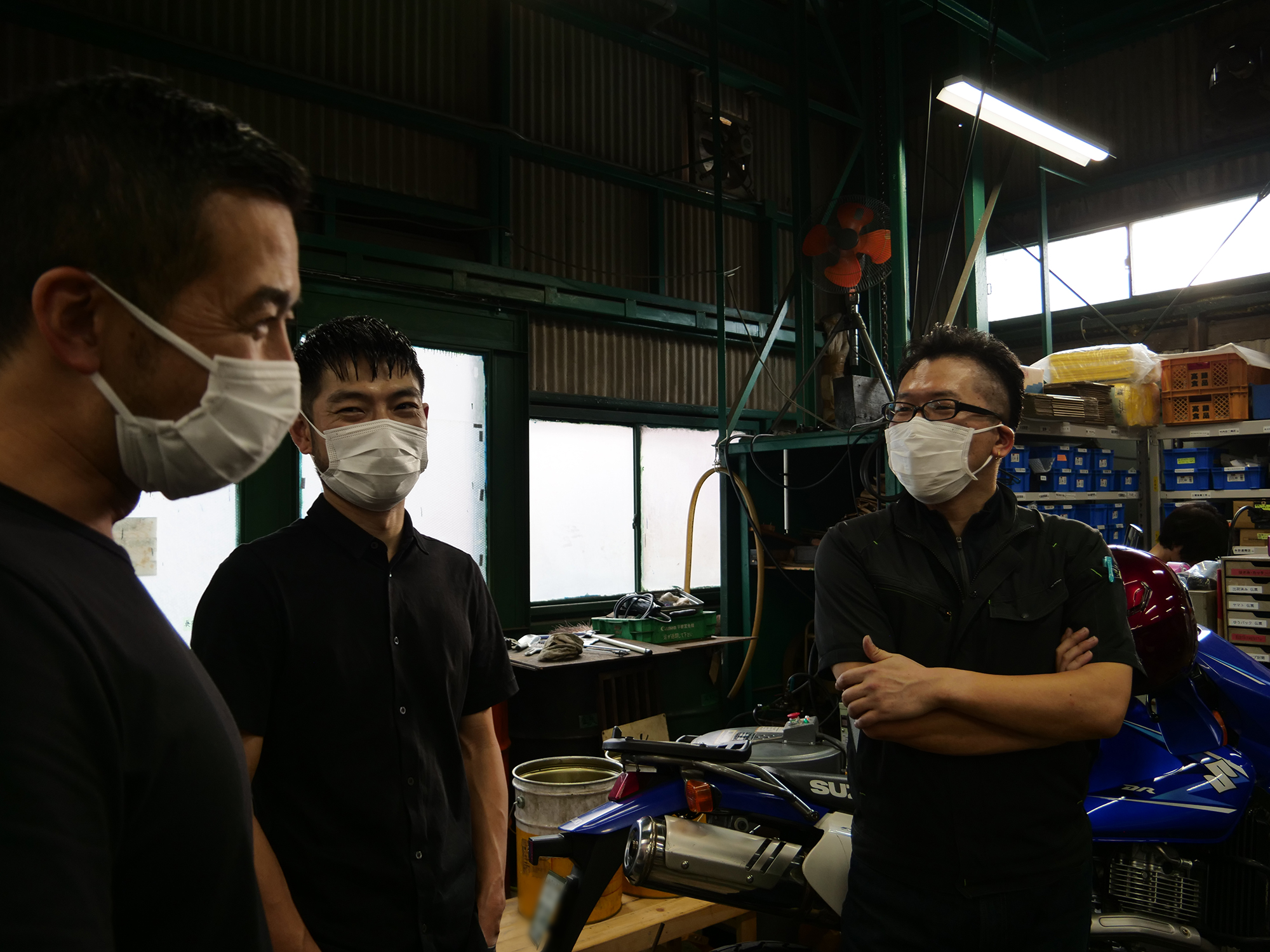
The nib reimagined: Balancing industrial design and craft
The dip pen has long been used for writing with ink, and was the standard writing instrument before the development of fountain pens.
Today, there is a renewed interest in dip pens as people rediscover the appeal of pen and paper amid the decline in everyday handwriting.
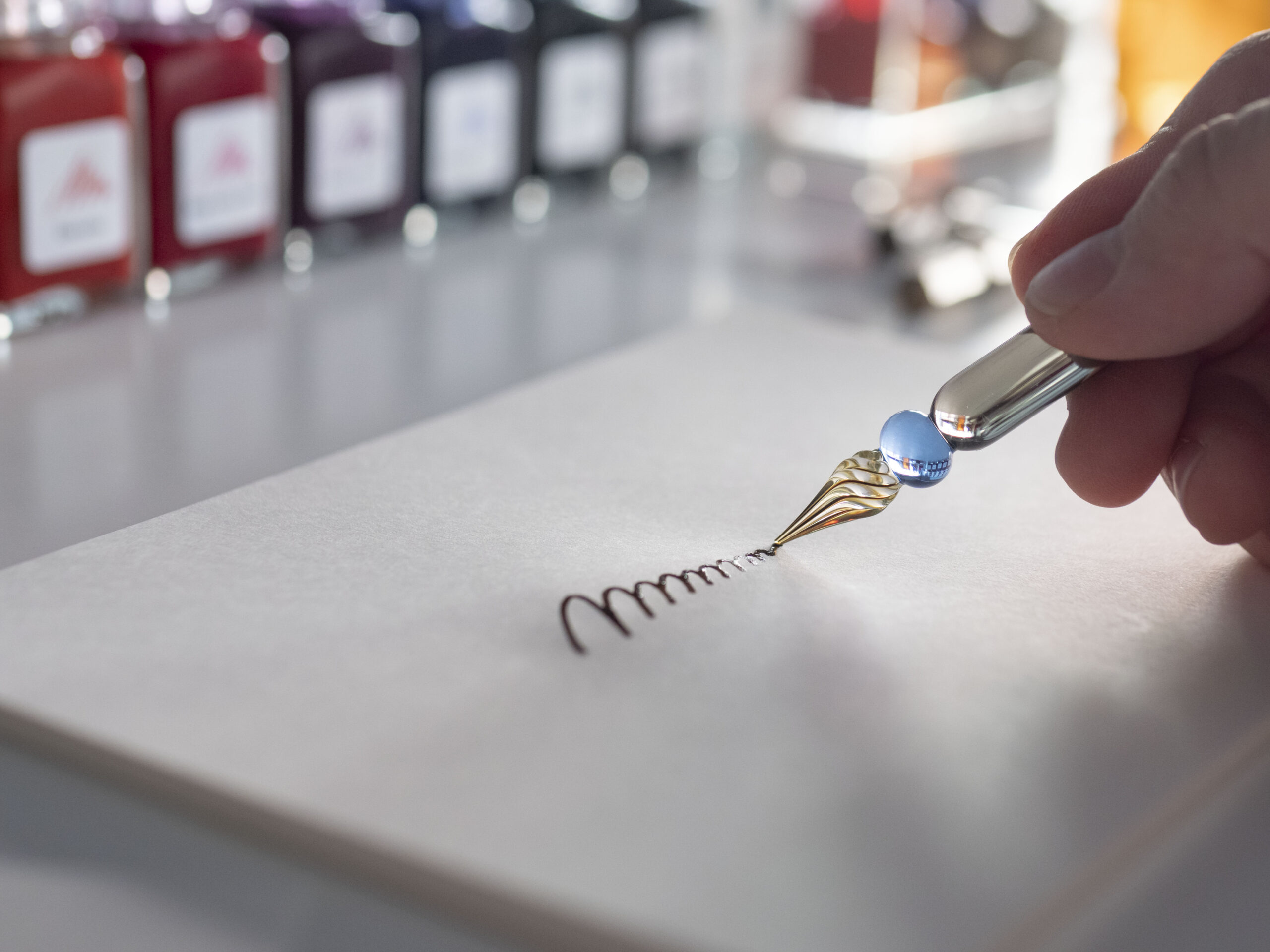
In particular, glass pens have seen a steady rise in popularity in recent years.
Our glass pens are individually handcrafted by artisans who can only produce a few dozen pieces at most each month.
We wanted more customers to experience the joy of dip pens, and in 2018 released the Glass nib, a detachable glass nib for nib holders.
However, as the nib was still made by hand, demand soon exceeded supply.
We decided to design an alternative nib; this time, one that can be made more readily available in volume.
A variety of materials were considered for the new nib, from traditional bamboo and brushes to ceramic and resin.
We wanted to replicate the glass pen’s ability to hold ample ink while being easily cleaned with water.
Metal seemed an ideal material that’s also suited to mass production, and we consulted our friend and product designer Yuto Yamazaki.

Specialising in metal products, Yamazaki’s design approach is informed by both engineering and aesthetic principles.
He welcomed the challenge of designing an entirely new kind of nib, and we set out to work, enlisting the help of local metal fabricator Yuichiro Matsushita of Matsushita Manufacturing.
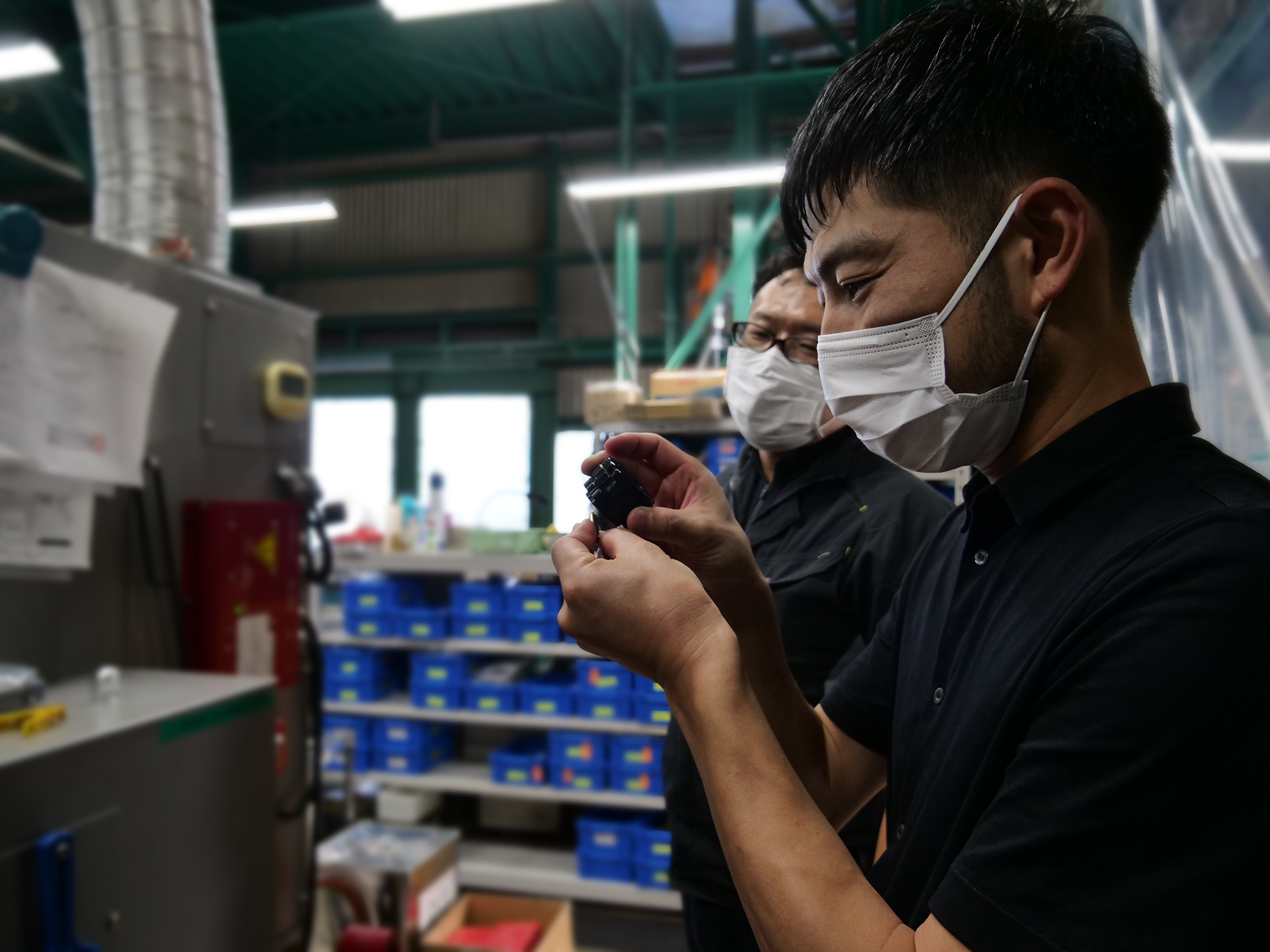
Which metals are suited to nibs?
What is the optimal number of grooves for holding ink?
Should the grooves be straight or form a spiral?
There were many questions to be resolved, and Yamazaki and Matsushita spent time investigating each possibility one by one.
Several dozen prototypes later, our new nib was complete.

In creating the nib, we paid particular attention to the construction of the grooves.
Appearing as a single cut at first glance, each groove is cut in parts using multiple tools so that it tapers in depth from the base towards the point.
Requiring watchful execution, this process ensures the nib’s exceptional smoothness and ink retention.
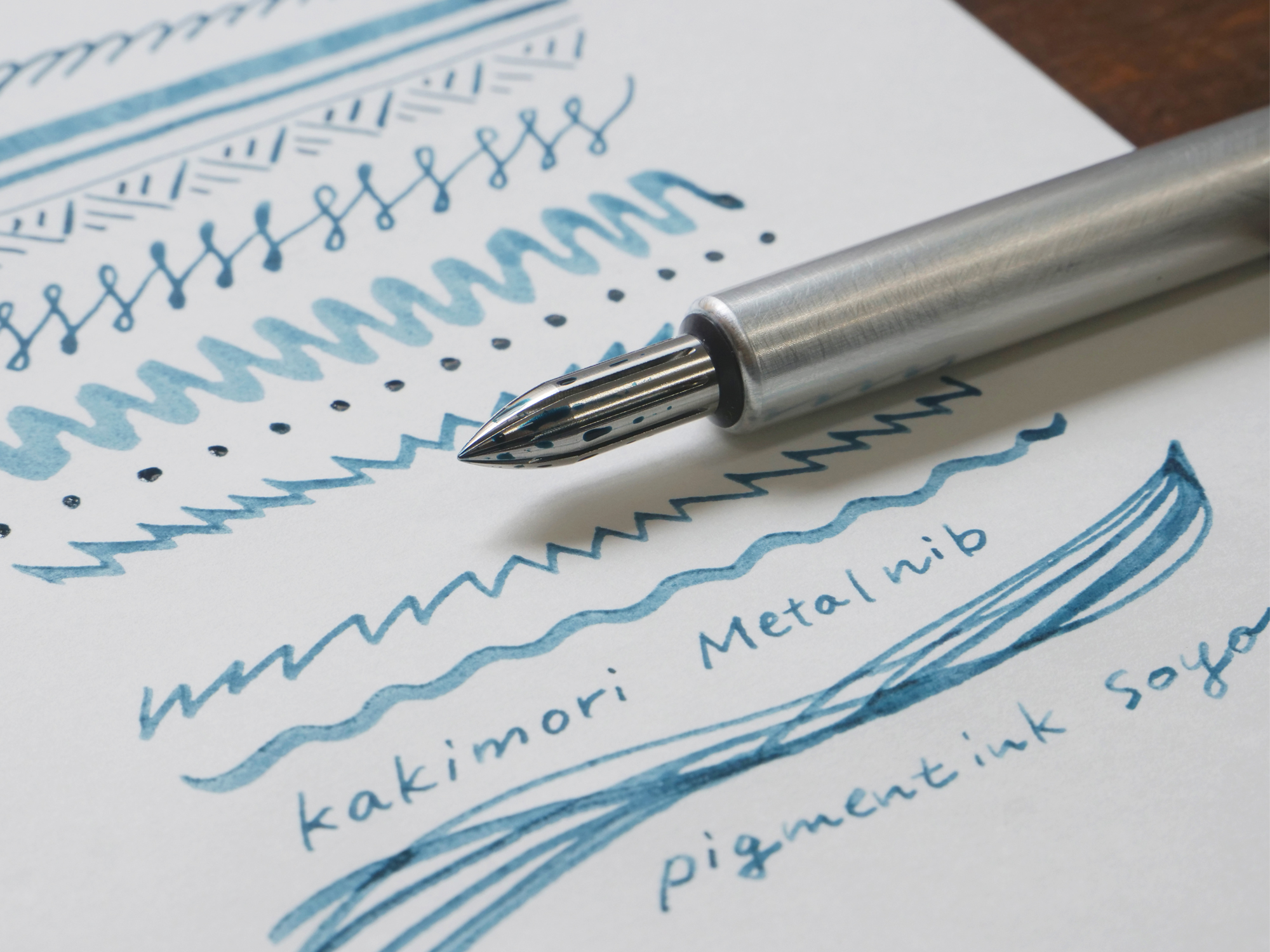
While developing the nib, we learnt that the choice of metal considerably altered the writing experience.
Brass had a soft feel and produced calligraphy-like lines, while stainless steel delivered a stiffer point with reliable consistency.
We were equally drawn to these contrasting qualities and decided to make the nib in both materials.
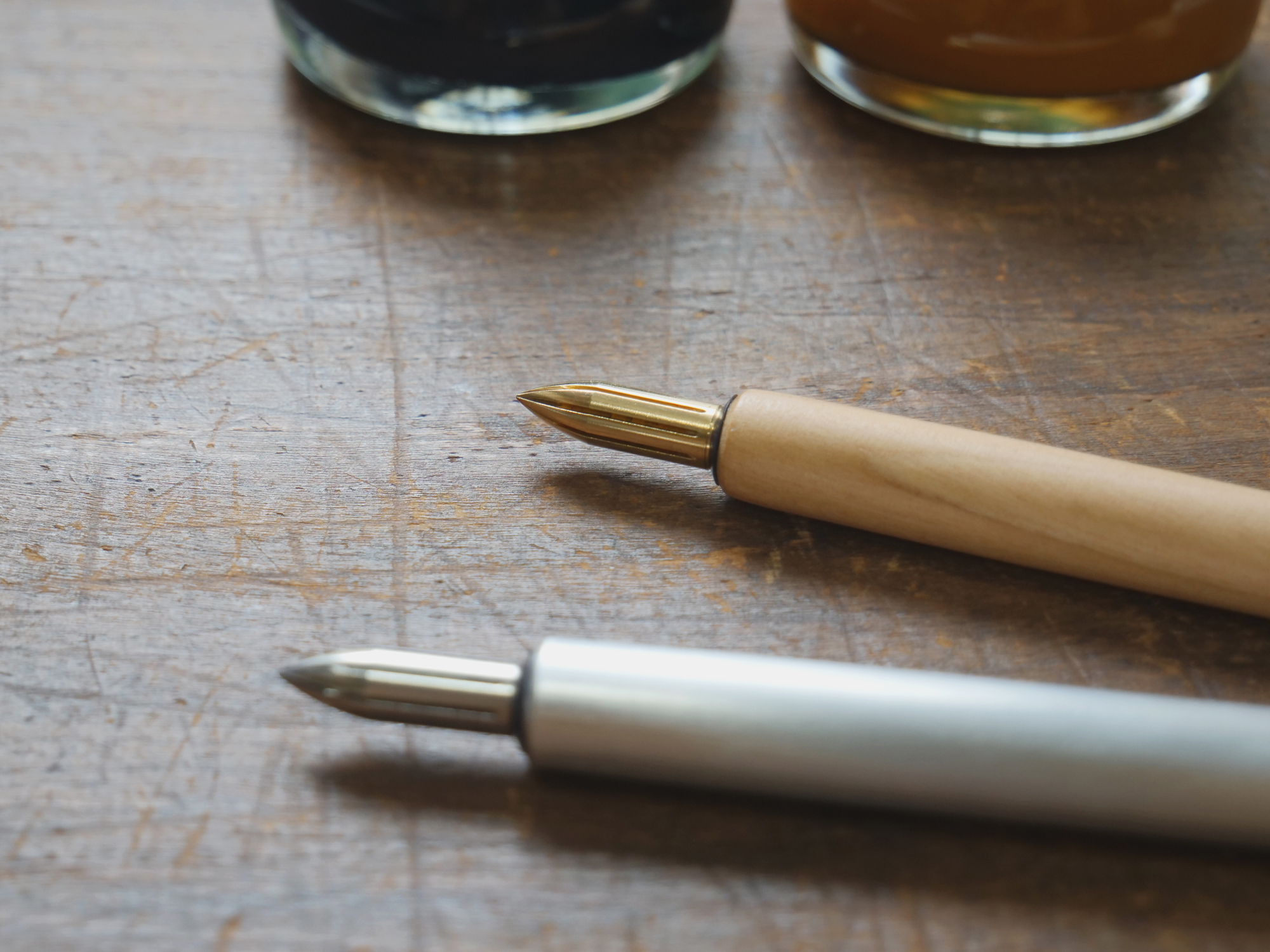
The resulting nib is a harmonious union of the efficiency of industrial manufacturing and the care of craftsmanship.
While it is a product of advanced technology, manufactured to 0.01mm precision, there is a sense of nostalgia in its appearance.
Named simply “Metal nib”, we hope it will inspire endless exploration and expression that will make its two creators proud.
